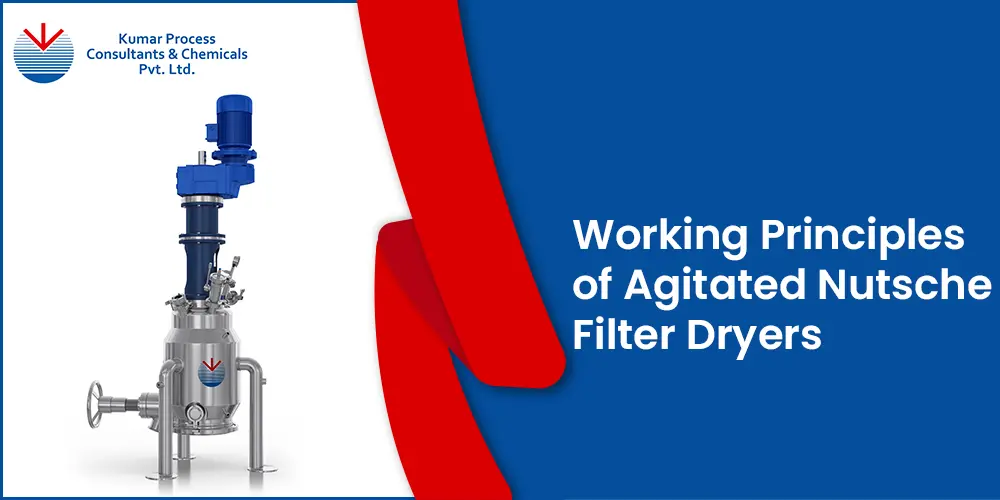


Agitated Nutsche Filter Dryers (ANFD) are primarily used in industries such as pharmaceuticals and chemicals to separate solids from liquids. They provide an efficient way to filter, wash, and dry materials all in one unit. Known for maintaining product purity, ANFDs are crucial in processing important ingredients. This system combines the functions of a filter, agitated reactor, and dryer to make it more cost-effective.
In this blog, we’ll explain how Agitated Nutsche Filters work, including their main parts, features, filtration process, and industrial uses.
ANFD working is based on two primary stages—filtration and washing—the ANF process begins with introducing the mixture into the vessel for liquid filtration through the medium. Agitation secures even distribution and prevents filter clogging. Following filtration, a wash liquid cleanses the retained solids and purges residual contaminants. Adaptable to both vacuum and pressure modes, the design of the agitated nutsche filter optimizes the filtration rate for thoroughness and efficiency in solid-liquid separation.
A modern Agitated Nutsche Filter Dryer consists of five primary components:
Agitated nutsche filter dryer working principle is based on two primary stages—filtration and washing—the ANF filter process begins with introducing the mixture into the vessel for liquid filtration through the medium. Agitation secures even distribution and prevents filter clogging. Following filtration, a wash liquid cleanses the retained solids and purges residual contaminants. Adaptable to both vacuum and pressure modes, the design of the agitated nutsche filter optimizes the filtration rate for thoroughness and efficiency in solid-liquid separation.
Here's an overview of each stage involved in filtration process of ANFD dryer:
Agitated Nutsche Filter Dryers are versatile and efficiently used for filtration and drying in various industries.
In the petrochemical industry, agitated nutsche filters are essential for separating and refining crude oil components and help in the production of fuels, plastics, and synthetic materials.
ANFD in pharma plays a vital role for maintaining the purity and quality of drug formulations through precise filtration and drying processes.
Utilized within the edible oil industry, ANFs help in the refining and purification of oils so that they meet food safety standards.
ANFD dryers contribute to the beverage industry by clarifying liquids and assuring the purity of drinks ranging from juices to alcoholic beverages.
Essential for the chemical sector, ANFs facilitate the separation and purification of chemical compounds that aid in the production of various industrial products.
Agitated nutsche filter dryers support the bio-fuel industry by filtering and processing raw materials into usable fuels, promoting sustainable energy solutions.
Kumar Process Consultants is a leading agitated nutsche filter dryer manufacturer, specializing in offering high-performance filters for various industries. Our Agitated Pressure Nutsche Filters are built with advanced technology for durability, efficiency, and industry compliance. We focus on providing reliable filtration solutions that meet your needs.
ANFD working principle depends on mixing wet materials with an agitator, filtering the slurry to separate solids from liquids, and then drying the solids with heat.
ANFD stands for Agitated Nutsche Filter Dryer, designed for efficient filtration, washing, and drying, particularly in the pharmaceutical and chemical industries.
ANFDs integrate easily into existing workflows, ensure high-efficiency purification, and allow safe isolation of potent compounds with minimal operator risk.